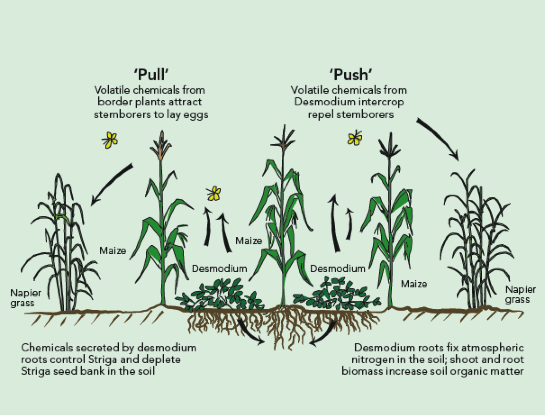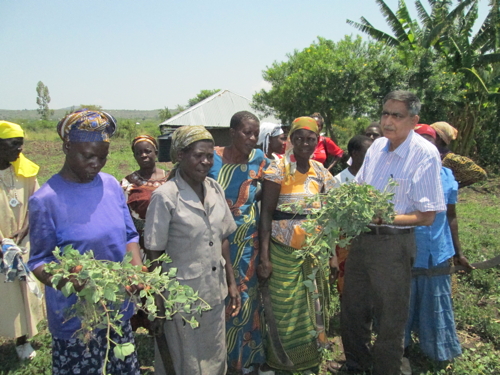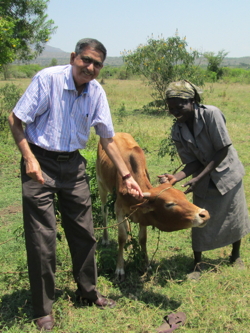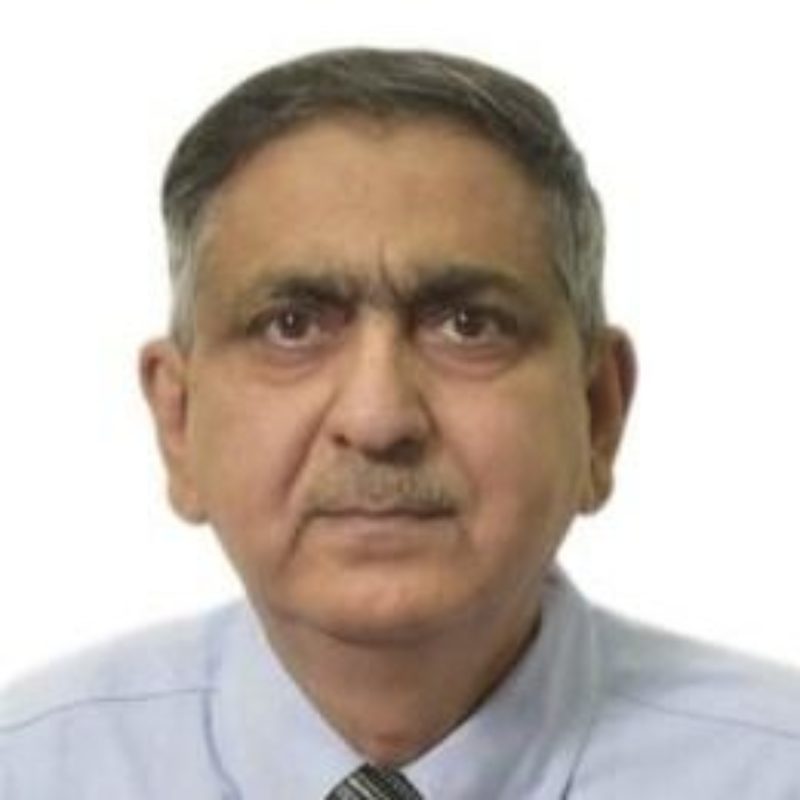Farming First is pleased to act as media partner for the Louis Malassis International Scientific Prize and the inaugural Olam Prize for Innovation in Food Security. Our new blog series will showcase stories from scientists nominated for these prestigious prizes.
The first blog in this series outlines the work of Professor Zeyaur Khan, nominated for the Louis Malassis International Scientific Prize for Outstanding Career in Agriculture.
The dual menace of striga and stemborers
Five years ago, Mary Atemo was struggling to produce maize on her small farm in Western Kenya. Despite weeding for many days each season, the invasive weed striga always robbed the growing crop of nutrients. Stemborer larvae chewed out the heart of the maize stems, weakening it further, and the farm produced hardly any grain. Like 320 million other farmers across Africa whose farms are afflicted with striga and stemborers, the Atemo family often went hungry. Striga weeds and stemborer pests can cause complete yield losses, estimated to cost US$14 billion each year in sub-Saharan Africa, and affecting more than 40 per cent of its arable land.
But in 2010, Mary learned about push–pull, an innovative system in which maize is grown with two companion plants, desmodium and Napier grass, which together tackle stemborers and striga. In 2011, Mary planted her first push–pull plot and has continued cultivating maize on it ever since. Today, the outputs from her two push–pull plots are the difference between food poverty and food security for her family.

Mary Atemo feeds her cows on Brachiaria grass harvested from her climate-smart push-pull
They are one amongst thousands of other households in Kenya, Uganda, Tanzania and Ethiopia who have adopted push–pull. The driving force behind this transformative technology is agricultural entomologist Professor Zeyaur Khan, one of the finalists for this year’s Louis Malassis International Scientific Prize for Outstanding Career.
Using plants to deal with pests: Professor Khan’s approach
With his team at the International Centre of Insect Physiology and Ecology (icipe) in Kenya, and colleagues at Rothamsted Research in the UK, Professor Khan uncovered the chemical and ecological relationships at the heart of push–pull technology. Desmodium, grown between the rows of maize, acts as a repellent plant, driving stemborers from the cereal crop (the ‘push’). Napier grass, which is planted as a border to the plot, acts as a trap plant, attracting stemborers (the ‘pull’).

At the same time, chemicals released by the desmodium roots control parasitic striga weeds by inducing ‘suicidal germination’, which prevents the emerging striga from attaching to the cereal roots. As an additional benefit from the technology, the companion plants provide nutritious, high-value animal fodder, which farmers can sell or feed to stall-fed dairy animals. They also help to improve soil health by enhancing fertility and preventing degradation. This biological approach is practical, affordable and sustainable for smallholder farmers.
Recently, Professor Khan and his team have developed a climate-smart variant of the technology by identifying and incorporating drought-tolerant companion plants. “Our aim now is to reach at least 10 million people with the technology, while expanding the science behind push–pull to more cropping systems and different agroecosystems,” says Professor Khan.
Scaling out push-pull to farmers in the field
To ensure the technology reaches poor farmers, the research team has spent more than two decades developing a robust and far-reaching system for promoting and disseminating its use. Extension efforts began in 1997 with two groups of ten farmers in Western Kenya; by 2015, push–pull had spread to Ethiopia, Tanzania and Uganda and was being practiced by more than 96,000 farmers.

Dr Khan shows a group of women farmers how to establish a push-pull field with desmodium vines
Push–pull is a knowledge-intensive technology. Professor Khan is adamant that one of the most important contributions that scientists can make to development is in explaining how and why agricultural systems work. One of the reasons that push–pull has spread successfully, he says, is because “each farmer who has planted it knows why he or she has planted it. Farmers understand the science of it very well.” The more knowledge farmers have, Khan argues, the better.
Push–pull can provide a range of benefits for different farmers and their families. It contributes to better nutrition for people and livestock, increased food security and stronger social safety nets, reduced poverty, and the education of many children.
“I am happy that I have devoted my life to developing and adapting push-pull, and helping to bring food security to Africa”, comments Professor Khan.
The winners of the Louis Malassis International Scientific Prize and Olam Prize for Innovation in Food Security, will be announced at the Third Global Science Conference on Climate Smart Agriculture on 16th March, 2015.




